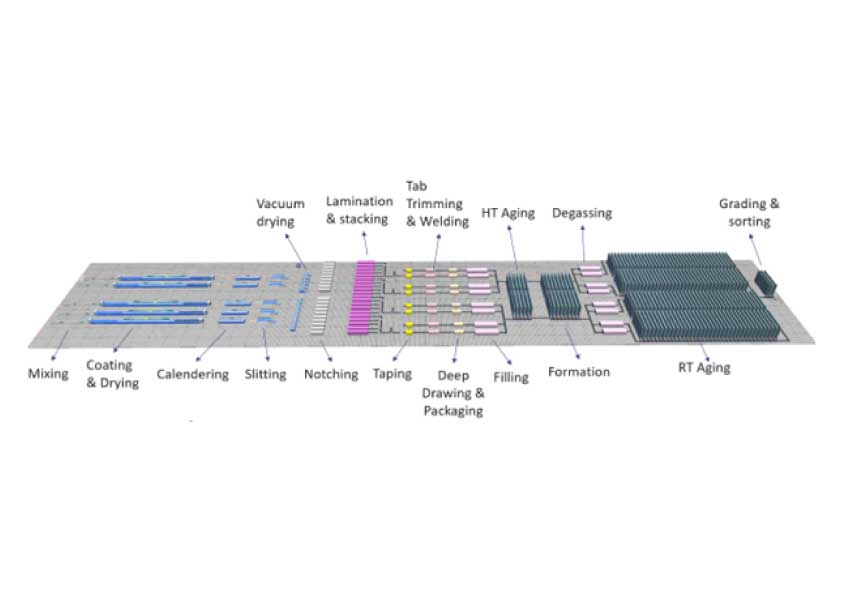The European Union is investing substantial research and innovation effort to develop new, performant, safe and sustainable battery cell chemistries. But what does it mean to go from lab and pilot scale to industrial scale production? What would production actually look like on the order of gigawatt hours per year?
In WP5 of the 3beLiEVe project, Manz Italy (MIT) designed the manufacturing process for LNMO/Graphite-Silicon pouch cells with 70 Ah capacity and developed virtual models of Gigafactory plants, using Siemens Tecnomatix Plant Simulation software. Two production scales, 1GWh/year and 10 GWh/year, were considered to get insights into challenges and opportunities related to scaling up the processes. The plant simulation is a powerful tool to visualize the flow of materials in the factory and the interactions between installed equipment, highlighting potential inefficiencies and monitoring energy consumption.
The scale-up of the 1 GWh/y model to a full 10 GWh/y production plant led to a rearrangement of the electrode production part, changing from a batch mixing process to a continuous mixing one, and using wider jumbo electrode reels. This resulted in a more efficient use of equipment, space and energy in the 10 GWh/year plant compared to the 1 GWh/year case, reducing the estimated energy consumption from 50 to 36 Wh per Wh of cell energy, and limiting the number of installed machines from 24 to about 12 per GWh/year of production capacity. The required areal footprint of such a gigafactory with an annual output capacity of 10GWh is around 80,000 m2, with an hourly output of over 5100 cells.
The gigafactory model allows the estimation of the energy needs also across the various main stages of cell production, such as electrode manufacturing, cell assembly, and cell finishing. In further work, the modeled gigafactory production process will be incorporated as part of the overall lifecycle analysis for the LNMO technology explored in 3beLiEVe, across its full lifespan from production, first life in a vehicle, second life as battery energy stationary storage in conjunction with photovoltaic electricity generation, and end of life (recycling).

